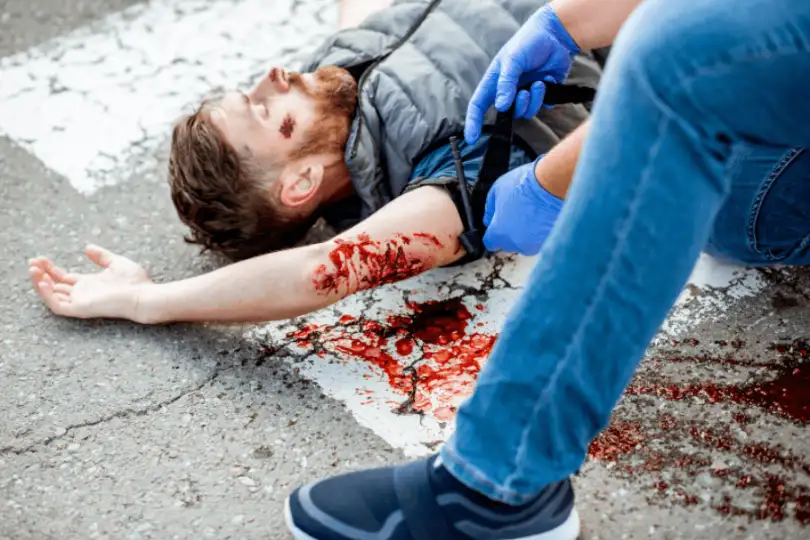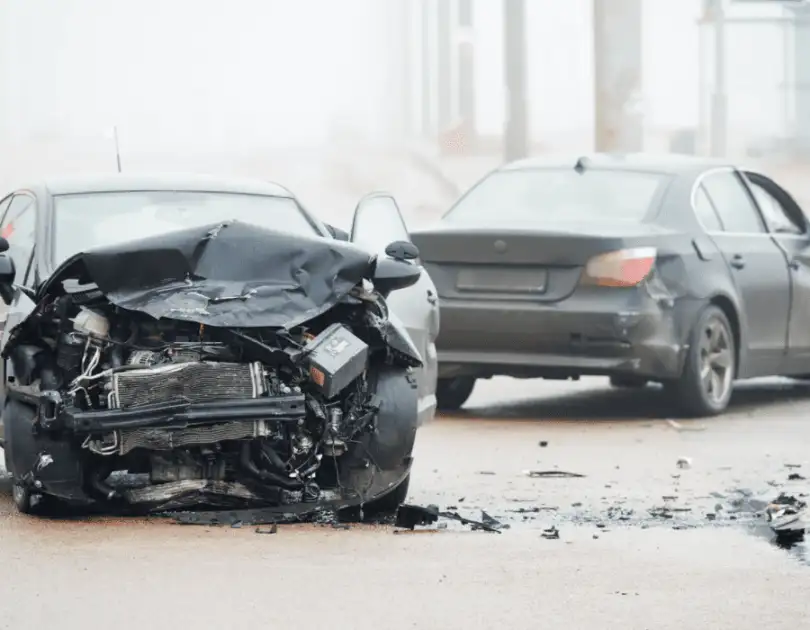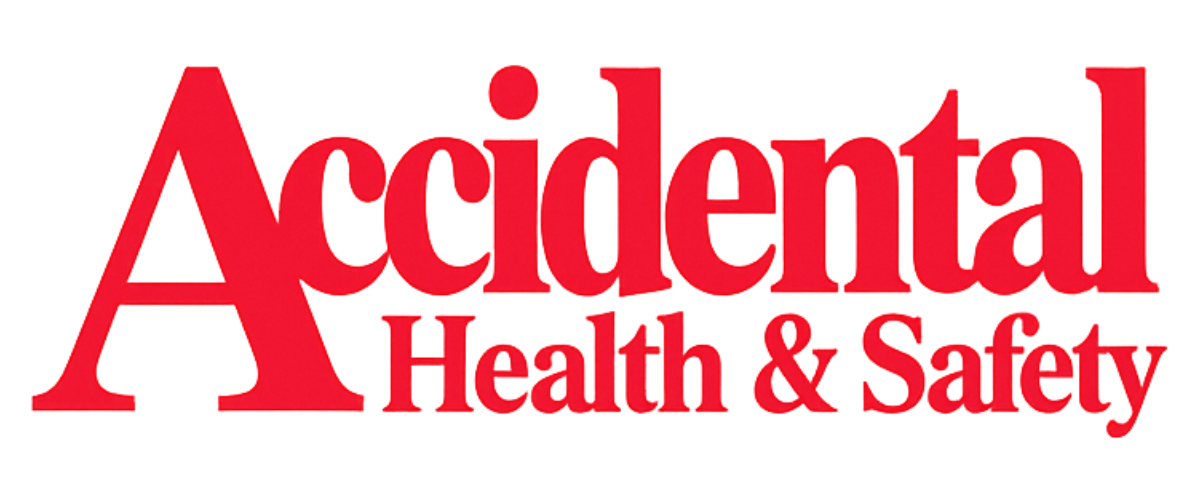Training and Assessment Delivered on Behalf of Allens Training Pty Ltd RTO 90909
First Aid Triage
[July 9, 2024] Hey there, first aid heroes! We’ve spruced up our triage guide with some new info. We’ve added a section on what to do to clarify the challenge of having to help someone who is severely bleeding vs someone unconscious, and introduced you to START, a more higher level triage system. Whether you’re a regular or a first-timer, dive in for some updated, life-saving knowledge!
Why Triage Matters
All of us are aware when we go to hospital that those with the most serious injuries go first. This often means a very long wait if we’ve sustained a smaller injury like a broken arm. The ordering of treatment is a process called triage. So what about First Aid Triage?
While medical professionals are taught triage, it’s often overlooked for First Aiders. However, it’s vital that First Aiders understand some basic principles of triage! Often workplace incidents or car crashes can involve multiple patients. We’ve written 3 important points to keep in mind for First Aid Triaging.
1. First Aid Triage Priorities
If multiple people are injured, who do you prioritise? Of course it’s those with life threatening injuries. What are some common life threatening injuries it’s important to treat? Things like excessive bleeding, or obstructed airways (i.e choking, water, blood or tongue)
Once you’ve treated those patients, than you can help those who are stable but don’t need urgent care. Of course, in such a scenario, make sure to keep monitoring patients and make sure to be alert to treat any whose condition changes for the worst.
2. Cardiac Arrest
In an emergency, a critical patient may go into cardiac arrest. A patient in cardiac arrest will have no effective breathing and be unconscious. Naturally we would likely want to treat them first due to the severity of their injury. However, there is a proviso: If someone is else needs urgent treatment to stay alive, we would treat them before giving CPR to another patient.

Consider this hypothetical scenario, you are a designated first aider at a road-working site. There is a severe car crash. You are nearby and determine it is safe enough to help. You find two people inside and you drag them to safety. Patient 1 is in cardiac arrest. He is unresponsive and not breathing. Patient 2 is still breathing and conscious, but his leg was seriously injured. He is suffering from life threatening bleeding.

Which of these patients would you treat first? In this case the right answer is Patient 2. Controlling his bleeding by packing the wound or applying a torniquet would give him a fair chance of survival. Once we have the bleeding under control, then we can provide CPR to patient 1.
So just to recap: while we aim to treat the most serious injuries first, if someone is in cardiac arrest, we prioritise other life threatening injuries before moving onto the person who needs CPR.
3. Safety Concerns for First Aid Triage

If there is an incident where multiple people have been injured, then chances are the incident is severe enough to present a significant safety risk. What does that mean for you? If you have to triage people, don’t forget about safety! Take steps to protect yourself. Do what you can to make the scene safe. If the scene is safe enough to enter, provide assistance getting patients out of the way. It’s a good idea to alert those with minor injuries to get to safety. Then move those who need the most help. This may include dragging the unconscious to safety.
4. Bleeding VS Unconscious

We’ve already touched on it. But we just want to include a dedicated section to make it clear.
When faced with multiple casualties, Here’s a key principle to remember: severe bleeding should always be addressed first, even if someone else is unconscious and not breathing.
Why? Because a person who is unconscious and not breathing has a lower chance of survival in a multiple casualty situation. On the other hand, someone with severe bleeding can be saved if treated quickly.
If you encounter someone who is unconscious but breathing, ensure they’re in a good position (like the recovery position) to maintain their airway, then immediately move on to treat the person with severe bleeding. The bleeding should be treated with urgency, as it’s a life-threatening condition that can be addressed quickly and effectively.
Remember, in triage situations, we’re trying to save as many lives as possible. Stopping severe bleeding can be done relatively quickly and has a high chance of success, making it a top priority in multiple casualty scenarios.
Advanced First Aid Triage: The START System
Now, let’s talk about a more advanced way of doing triage. It’s called the START system, which stands for Simple Triage and Rapid Treatment.
A Bit of History
START was actually developed to help with basic triage. It’s actually getting a real workout around the world, being used in remote rural areas of Uganda.
It’s just one of many triage systems out there. Medical professionals in Australia often use more complex systems like the ones found on ETEK and ACEM, which have more detailed criteria for assessing patients. If you want to grow your skills, START is a great stepping stone to more advanced triage methods.
What could START mean for you? If you are a first aid team at a mine site, emergency responder at major events or run a volunteer emergency team, it’s a great triage system to learn and implement. It can vary depending on the area and local standard.
How START Works: The Color Tag System
START uses different colored tags to sort injured people. Think of it like a traffic light system, but with an extra color. Here’s what each color means:
- Green: Minor injuries, can wait for treatment
- Yellow: Moderate injuries, need help but can wait a bit
- Red: Severe injuries, need immediate help
- Black: Unfortunately, unlikely to survive given the limited resources in a mass casualty situation
Now, let’s see how we decide which color to give each person:
Green Tags:

- Who gets them? Anyone who can walk
- What to do? This is an easy way to quickly identify those with minor injuries. Ask them to move to a safe area. They might even be able to help others!
Black Tags:

- Who gets them? Anyone who isn’t breathing, even after you try to clear their airway
- What to do? In a mass casualty situation, we focus on those we’re more likely to save. While these people could potentially be saved with CPR in a one-on-one situation, there’s a higher chance of saving those with red tags when resources are limited.
Red Tags:

- Who gets them? People with any of these signs:
- Breathing very fast (more than 30 breaths per minute)
- No pulse at the wrist, or it takes more than 2 seconds for color to return after pressing on their nail
- Can’t follow simple commands like “squeeze my hand”
- What to do? These people need help right away
Yellow Tags:

- Who gets them? People with moderate injuries who don’t fit in the other categories
- What to do? Keep an eye on them, as they’ll need help soon, but after the red tags
Here’s how you’d use START:
- Shout for anyone who can walk to come to you (they get Green tags)
- Go to those who didn’t walk over:
Check if they’re breathing
Check how fast they’re breathing
Check their pulse
See if they can follow a simple command - Tag them based on what you find
Remember, just like we said before about keeping an eye on everyone, the START system isn’t a one-time thing. We keep checking on people because their condition might change.
This START system helps us be more organized when there are lots of people who need help. But don’t worry – the basic ideas we talked about earlier still apply. We’re still focusing on the most serious injuries first (that’s what the red tags are for), we’re still being careful about safety, and we’re still thinking carefully about how to help people in cardiac arrest.
First Aid Triage Wrap-Up
- In Triage we prioritise the most severely injured first
- Except, If someone is in cardiac arrest, we treat other life threatening conditions first.
- We act safely.
- Severe bleeding takes priority over unconsciousness, even if the unconscious person is not breathing.
- The START system is a useful tool for more advanced triage situations.
Following these steps will help us to act confidently as first aiders in a life threatening emergency!
Stay safe out there!
Read more great articles in our First Aid Guide.
Read the Australian Resuscitation Council Guidelines.

